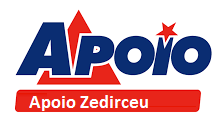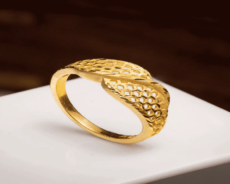Introduction
Imagine this. You are standing in the skincare aisle of your supermarket, looking at the many products that promise your skin hydration and moisturisation. You look at a few with attractive packaging; you could look at their ingredients. Ultimately, you choose your favourite brand, regardless of whether the product provides hydration or moisturisation because, “aren’t they the same thing?”

Does this sound like you? Don’t worry; you are not alone. A lot of people confuse hydrators with moisturisers and vice versa.
While both promise to make your skin soft and supple, the difference lies in what they are made of and how they work on your skin. Let’s find out more in this article.
How is a Moisturiser different from Hydrator?
From a scientific standpoint, moisturiser encompasses various types like emollients, squalene, humectants, and occlusive agents. However, in the marketing world, the terminology has been revamped. The definition of hydrator and moisturiser depends on the brand. Though there is no universal definition, brands use these terms to distinguish how the skin receives moisture.
Moisturisers and hydrators are technical terms that refer to different skin care ingredients.
Moisturisers include oil-based elements like emollients and occlusive agents, such as mineral oil or petrolatum, that form a barrier on the skin surface to prevent water from escaping.
Hydrators, on the other hand, are humectants like hyaluronic acid or glycerin that draw moisture from the atmosphere or the skin and retain it on the skin. Choosing the right skin care product is crucial for skin health, as they function differently, and the selection should depend on your skin type to achieve better skin hydration.
What should you use?
There is an abundance of skin care products in the market, including balms, oils, creams, gels, ointments, and hydrators. However, in reality, most of these products work similarly.
Skin lotions and products usually consist of emollient and occlusive components, as well as humectants, making them capable of moisturising and hydrating the skin simultaneously.
The texture of the product, whether it is a gel, balm, oil, or cream, does not significantly impact its performance. It merely influences the application experience.Therefore, it is crucial to examine the ingredients and try out different products, as your skin may respond better to either a moisturiser or a hydrator alone.
By discovering how your skin absorbs moisture, you can optimise your approach to achieving well-hydrated skin.
Let us now see what should you use as per your skin type.
If you have dry skin
If your skin is dry throughout the year, and you experience flaking or peeling, the root cause is not seasonal dehydration but the inability of your skin to retain moisture. To overcome this, you need to use a moisturiser that can form a protective barrier on the skin’s surface and prevent water loss.
Using a thick, emollient moisturiser with the right ingredients can give your skin the nutrients it requires to remain healthy throughout winter. For extremely dry skin, petroleum jelly is the most effective occlusive agent. But plant-based oils like canola or soybean oil can work if you want to avoid petroleum jelly. Nevertheless, petroleum jelly is the best option. Key ingredients include plant oils, such as jojoba oil, and nut oils, like coconut oil.
If you have dehydrated skin
To address dehydrated skin, it is essential to replenish the moisture in the skin. Opt for a hydrating serum that contains hyaluronic acid, which can hold up to 1,000 times its weight in water and add hydration back into the skin. Other ingredients like aloe vera and honey can also help.
Pro tip by tira :- Make sure to drink plenty of water. A good target is drinking at least half of your body weight in ounces of water daily. For instance, if you weigh 150 pounds, aim for 75 ounces of water daily. Consuming water-rich foods such as watermelon, strawberries, and cucumber can also help provide the hydration that your skin and body require for optimal appearance and health.
If you have oily skin
Even if you have oily skin, it’s still possible for your skin to be dehydrated. In fact, dehydrated skin can worsen oily skin issues. Oily skin types often have a weakened skin barrier that makes it difficult for the skin to retain moisture.
As a result, the skin becomes dehydrated, which triggers the production of more oil. This creates a cycle that can only be broken by giving the skin the appropriate hydration and moisture it requires.
To combat this, seek out non-comedogenic and water-based moisturisers and hydrators. Water-based products will feel lighter on the skin and won’t clog pores
When it comes to keeping your skin hydrated, the best approach is to use both a moisturiser and a hydrator, depending on your skin type and the ingredients you’re using.
Most skincare products contain occlusive and humectant ingredients, which simultaneously moisturise and hydrate the skin. However, choose your products wisely if you’re using single ingredients or a multi-step routine. For instance, hyaluronic acid, glycerin, aloe, honey, and snail mucin are great hydrators, while nut or seed oils, shea butter, plant oils, mineral oil, and lanolin are good moisturisers.
Ceramide is neither a moisturiser nor a hydrator, as it strengthens the skin’s barrier to prevent moisture loss. If you want to keep things simple, you can use a product that does both, such as a face mask. A good strategy is to first use a hydrator, such as hyaluronic acid, followed by a moisturiser with occlusive ingredients like plant oils to seal the moisture.
For more skincare tips, don’t forget to follow Tira. And while you’re at it, also check out our vast range of beauty, skincare, and haircare.
Happy shopping!







